ASUS Announces ZenFone 7 Series: The Triple-Flip Camera - Hands-On
by Andrei Frumusanu on August 26, 2020 3:00 AM EST- Posted in
- Mobile
- Asus
- Smartphones
- ZenFone 7
- ZenFone 7Pro
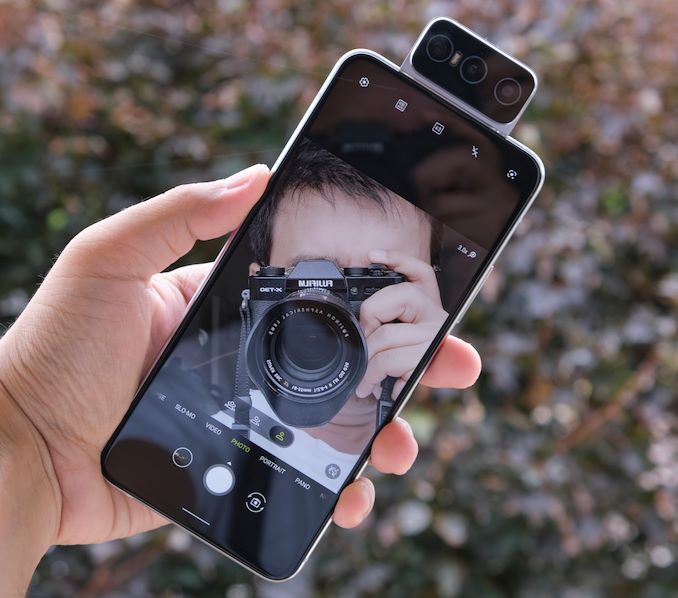
Today ASUS is announcing its follow-up to its innovative flip-camera design that was first introduced last year with the ZenFone 6. This year’s ZenFone 7 series, consisting of the regular ZenFone 7 and the ZenFone 7 Pro are sticking to the quite well received and innovative flip-camera design, improving upon its specification by adding in an extra camera module. We’ve also seen key specification improvements on the part of the phone itself, with an important shift from an LCD screen to a new 90Hz AMOLED display, as well as adoption of Qualcomm’s newest Snapdragon 865 and 865+ chipsets.
This year the company is also releasing to variants of the phone – beyond higher DRAM and storage configurations, the higher-end model features a higher-binned SoC as well as differentiates the camera systems by exclusively employing OIS – which is an interesting way to segment things.
| ASUS ZenFone 7 Series | |||||
| ZenFone 7 | ZenFone 7 Pro | ||||
| SoC | Qualcomm Snapdragon 865 1x Cortex A77 @ 2.84GHz 3x Cortex A77 @ 2.42GHz 4x Cortex A55 @ 1.80GHz Adreno 650 @ 587MHz |
Qualcomm Snapdragon 865+ 1x Cortex A77 @ 3.1GHz 3x Cortex A77 @ 2.42GHz 4x Cortex A55 @ 1.80GHz Adreno 650 @ 670MHz |
|||
| DRAM | 6 GB LPDDR5 | 8 GB LPDDR5 | |||
| Storage | 128GB UFS 3.1 + microSD |
256GB UFS 3.1 + microSD |
|||
| Display | 6.67" AMOLED 2400 x 1080 (20:9) 90Hz 200Hz Touch |
||||
| Size | Height | 165.08 mm | |||
| Width | 77.28 mm | ||||
| Depth | 9.6 mm | ||||
| Weight | 230 grams | ||||
| Battery Capacity | 5000mAh 30W charging (PD3.0) |
||||
| Wireless Charging | - | ||||
| Rear Cameras | |||||
| Main | 64MP IMX686 0.8µm pixels (1.6µm 4:1 16MP) f/1.7 |
64MP IMX686 0.8µm pixels (1.6µm 4:1 16MP) f/1.7 w/OIS |
|||
| Telephoto | 8MP 3x optical zoom f/2.4 |
8MP 3x optical zoom f/2.4 w/OIS |
|||
| Wide | 12MP IMX363 1.4µm pixels Dual PDAF 113° FoV ultra-wide f/2.2 |
||||
| Extra | - | ||||
| Front Camera | Flip-camera Design Front cameras = Rear cameras |
||||
| I/O | USB-C | ||||
| Wireless (local) | 802.11ax WiFi-6 Bluetooth 5.1 LE + NFC |
||||
| Other Features | Triple-function Power Button w/ Capacitive Fingerprint Sensor | ||||
| Dual-SIM | Dual nanoSIM | ||||
| Launch Price | ? | ? | |||
Starting off with the hear of the phone, the ZenFone 7 and 7 Pro employ Qualcomm’s latest Snapdragon 865 SoCs and are thus 5G-capable devices thanks to the X55 modem. ASUS here employs the newer higher-performance Snapdragon 865+ on the 7 Pro model which brings with it 10% higher CPU and GPU performance thanks to the increased frequencies of these IP blocks.
Further variations between the regular ZenFone 7 and the 7 Pro is in the DRAM and NAND storage department. The regular variant comes with 6GB of LPPDR5 and 128GB of UFS 3.1 storage, whilst the Pro gets respectively 8 and 256GB.
The key selling point and differentiating factor of the ZenFone 7 as opposed to other phones in the market right now is the fact that it employs a full-screen display without any notch or camera cut-out, enabling a seamless screen experience without distractions.
A big upgrade this year compared to last year’s model is the shift from an LCD to an OLED screen, which makes this year’s model significantly more attractive to users. The 6.67” screen features a 2400 x 1080 resolution in a 20:9 aspect ratio, and features a 90Hz refresh rate capability.
Although 90Hz isn’t the very top of the line for 2020, it’s still a huge improvement over other 60Hz phones and ASUS did manage to employ a 200Hz sampling touch controller which has a large impact on fluidity and responsiveness when you interact with your phone.
The back of the phone sees a glass back-panel which comes either in a “Pastel White” (pictured) or an “Aurora Black” colour variant. The phone lacks wireless charging.
It’s to be noted that this is a very large phone that is in line with the iPhone 11 Pro Max and the Galaxy S20 Ultra in terms of footprint, quite a bit larger and chunkier than the ZenFone 6. This is something that ASUS actively acknowledges as being a deliberate design choice so that that they could fit in more components and a larger battery, as well as enable the various antennas requires by 5G connectivity.
The camera setup now features triple modules. As the primary main camera, we’re seeing a 64MP IMX686 sensor with 0.8µm pixels that by default bins down to 16MP thanks to its quad-Bayer colour filter layout. The optics feature a large f/1.7 aperture.
The ultra-wide-angle also adopts the same setup as on the ROG Phone III with a 12MP IMX363 with 1.4µm pixels and dual-pixel phase detect focus ability. The optics have an f/2.2 aperture with a 113° wide viewing angle. Unusual is that it features auto-focus ability which means that this module can do dual-duty as a macro module since it enables super close focusing abilities.
New to the setup is an 8MP telephoto module which offers 3x optical magnification which thanks to multi-frame interpolation can be digitally cropped and magnified to up to a useable 12x zoom in the camera app. The optics here feature an f/2.4 aperture.
On the ZenFone 7 Pro the main camera as well as the telephoto module feature OIS in their modules, whilst the regular ZenFone 7 doesn’t feature this. We haven’t seen such segmentation in some time by a vendor, but it’s one of the cost-cutting measures that ASUS has decided to make for the cheaper model.
The flip-camera externally looks familiar with what we’ve seen on the ZenFone 6, however ASUS has greatly improved the internal mechanism of the newer generation module. The new module employs a new motor that is capable of 2.2x the torque of its predecessor even though it’s 40% smaller.
ASUS has also replaced the complex 49 signal and power cables that connect the various camera modules to the mainboard of the phone with a new 18-layer flexible printed circuit cable that promises to be twice as durable even though the total signal traces has increased to 110 outputs. ASUS claims it’s good enough for up to 200000 flips, which is 100 flips a day for over 5 years.
I’ve never had the pleasure to get a hands-on with the ZenFone 6, but the camera mechanism on the 7 series feels very solid and robust.
A new feature to the flip-screen is its ability to position itself at intermediary angles from within the camera app, giving you different capturing angles, which are essentially impossible for any other phone on the market.
Beyond your typical fully-flipped 180° setup in which the cameras can serve as high-quality frontal selfie cams, the module also can sit at a 90° or 135° angle. The phone’s panorama capture feature takes advantage of the flipping module to sweep the landscape whilst you hold the phone steady.
The phone is quite thick at 9.6mm, but that’s mostly due to the 5000mAh battery that’s included, which also bloats up the device to a 230g weight.
ASUS had put what I deem to be a quite unusual amount of focus on battery health of the device, and I found this to be a breath of fresh air amongst a crowd of vendors who seemingly just want to one-up themselves with absurd high charging speeds.
The phone features 30W USB-PD charging and features a corresponding (PPS compatible) charger in the box by default, however they don’t hide that faster charging does degrade your battery faster.
Beyond allowing for the option to disable fast-charging altogether from the phone side, and having smart scheduled charging features which allow you for example to only top-off the phone to 100% only in the mornings before you wake up, ASUS goes even further and even allows you to artificially limit the maximum state of charge the phone charges to.
Limiting the maximum state of charge level to 80% instead of 100% for example claims to reduce the battery capacity degradation over time by half. The above graph and data showcase the capacity degradation over charge cycles on the ZenFone 6 with 18W fast-charging.
ASUS deemed all these options and features to be beneficial to the customer and his device over prolonged usage – and the battery on the ZenFone 7 is even specially designed with a thicker anode-cathode separator to allow for faster charging and better capacity retention.
I’ve never seen a vendor be this transparent and forthright about the negatives of fast-charging and battery degradation in general, and I applaud ASUS for it.
ASUS has dropped the 3.5mm headphone jack this generation. Their rationale about the change was that due to the increased internal footprint required by the 5G antennas they had decided to do away with the jack to be able to save on space.
One thing that’s unique on the bottom of the phone is that it features an LED notification light on the left of the USB-C port. ASUS here said that they had to remove it from the front top of the screen due to the reduced bezel size, but didn’t want to abandon the light completely, so they just repositioned it to the bottom of the phone. This is actually quite useful and a more power-efficient way to handle things than an always-on-display so I do appreciate this detail.
The left side of the phone features a long SIM tray that is able to house two nano-SIMs as well as a micro-SD card simultaneously.
The right side sees a traditional volume rocker, as well as a triple-function power button. ASUS opted for a capacitive fingerprint scanner from Goodix integrated into the power button – it’s one of the cost-cutting measures allowing the ZenFone to hit a lower price-point. Beyond the traditional single-press power button function, dual-pressing the button calls up the Google assistant, and you can customise or disable this functionality.
Overall, the ZenFone 7 feels like a very solid phone with quite a lot of potential. The only thing of note here that I guess would be a negative is that it’s a very large and quite heavy phone, although it has reasonable ergonomics so it’s still pretty usable.
Availability and exact pricing of the ZenFone 7 and ZenFone 7 Pro to be updated shortly after the official launch.


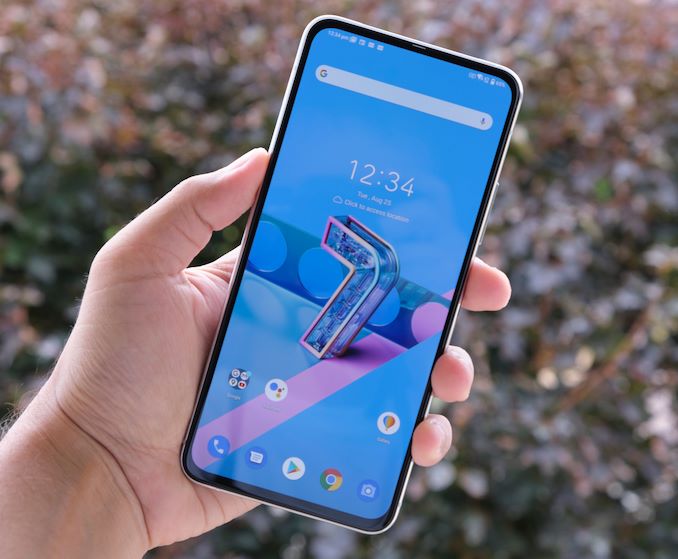
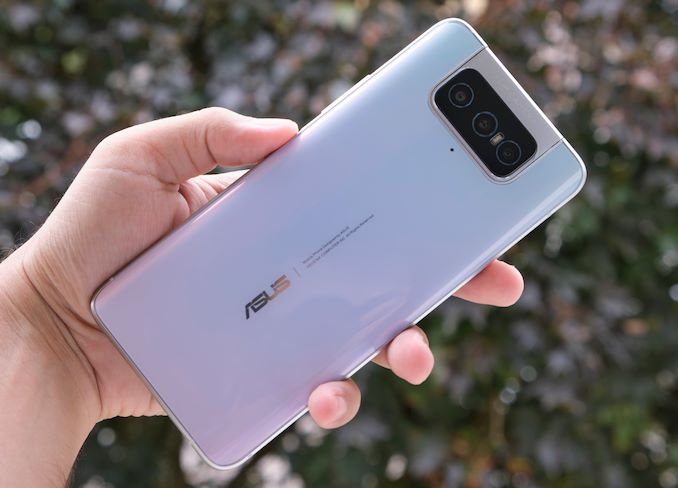
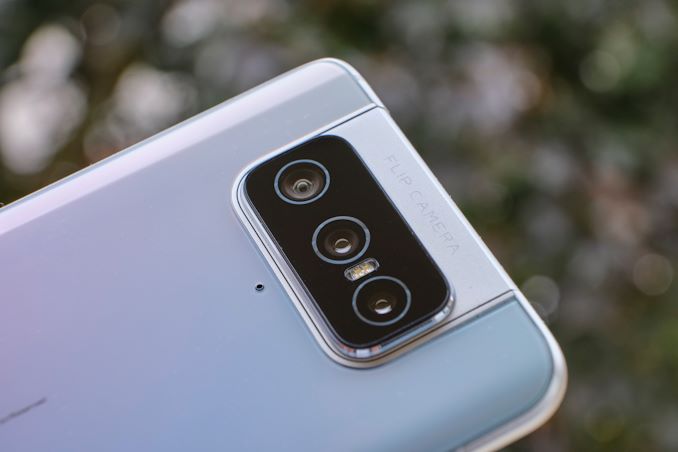
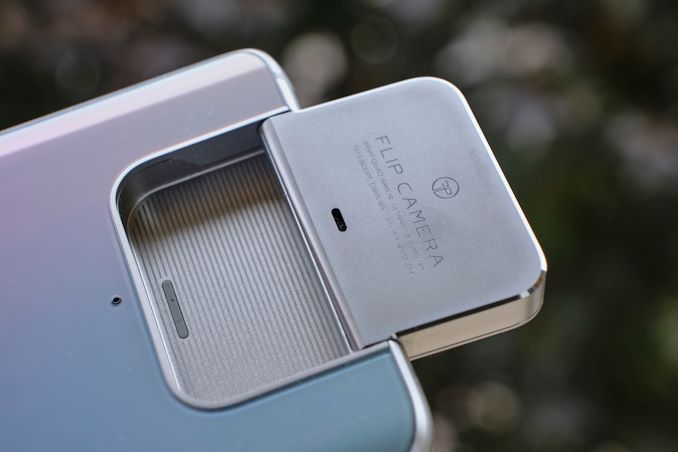
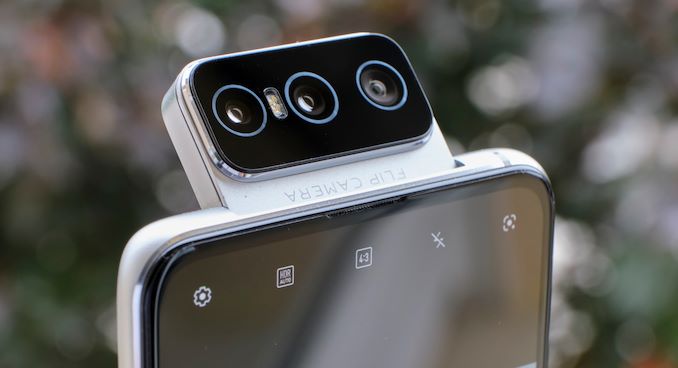
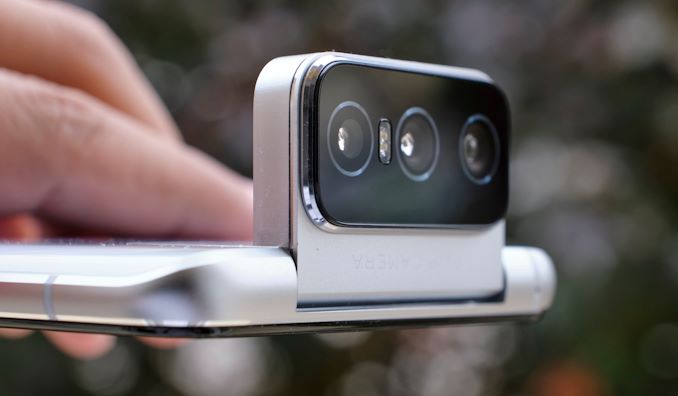
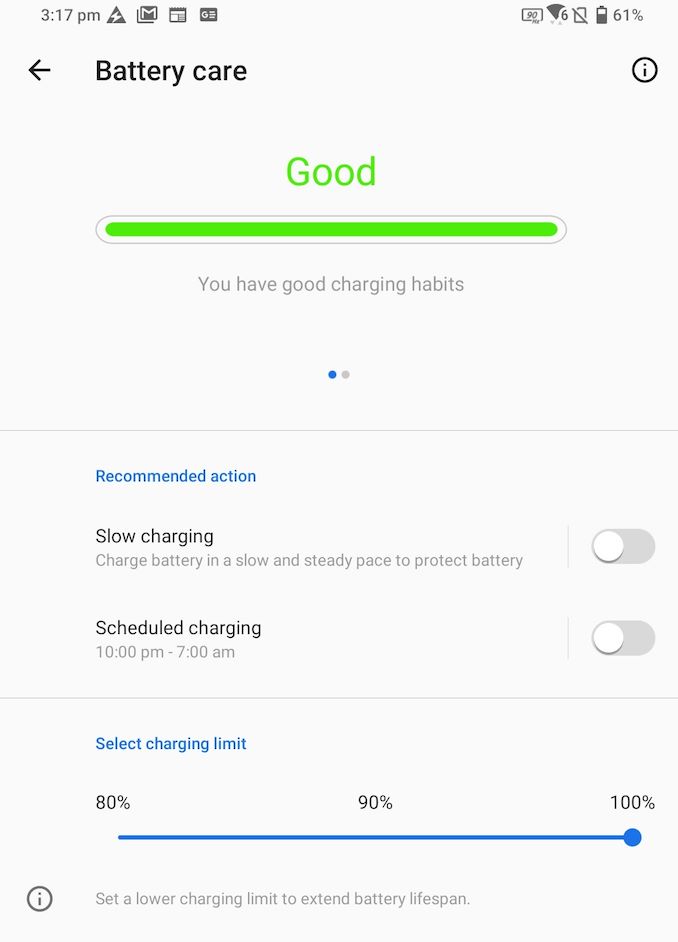
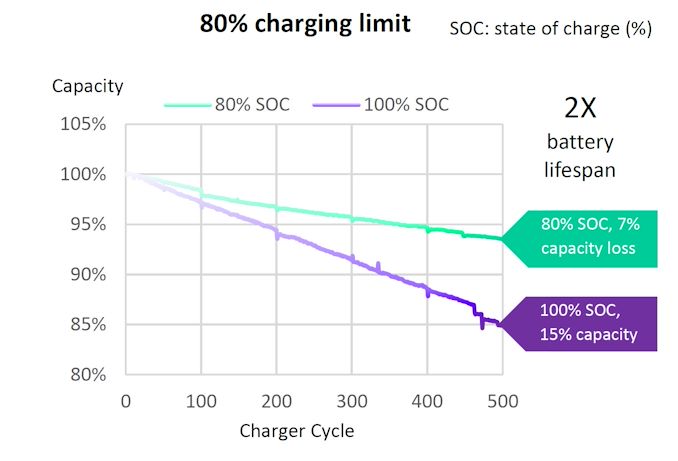










79 Comments
View All Comments
itsjustaprankbro - Friday, August 28, 2020 - link
I mean, the Note 10 was also junk. The Note 10 Lite / S10 Lite also had huge flaws. These devices are all MEH/10 in my book. Note 20 is just no different.Price? Well, 5G ruined pretty much the entire market for no reason.
damianrobertjones - Wednesday, August 26, 2020 - link
Corona happened. Maybe.sonny73n - Wednesday, August 26, 2020 - link
You’re not looking. All you do is whining.Spunjji - Thursday, August 27, 2020 - link
Do you know how much more they charge for the 865 than they did for the 855? Qualcomm are rent-seeking, and Apple and Samsung already proved out the case for absurdly expensive phones.damianrobertjones - Wednesday, August 26, 2020 - link
"ASUS is announcing its follow-up to its innovative flip-camera design"Huawei had this many, many years back as my GF owned a phone with a single flip up camera.
damianrobertjones - Wednesday, August 26, 2020 - link
'Huawei Honor 7i ' - 2015sonny73n - Wednesday, August 26, 2020 - link
Yep, those conniving lapdogs not only steal from others and claim it’s theirs but also accuse the original designers of stealing.s.yu - Thursday, August 27, 2020 - link
Like what Huawei's continuously demonstrated for the past half decade?They're also just calling it "innovative", which isn't exactly claiming originality or even strongly hinting at it, unlike Huawei who claimed to have invented the notch. If you call out every company who used the word "innovative" on something they didn't invent outright you'd be chasing after almost every company.
SirCanealot - Wednesday, August 26, 2020 - link
Me opening up this review:Oh cool, a phone review from Andrei! Looks pretty normal and interesting as always! *clicks the link and sees the picture of the triple cameras*
WHAT THE HECK IS THAT OMG WHAT DID YOU MAKE ME LOOK AT
Strauss45310 - Wednesday, August 26, 2020 - link
Will you be reviewing this phone? I'm really interested and curious